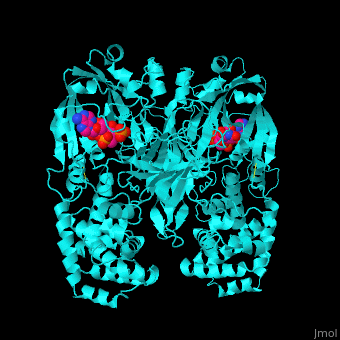Function
Diphtheria toxin (DT) is a toxin which is secreted by the bacteria causing diphtheria. DT catalyzes the transfer of NAD to a diphthamide residue in the elongation factor-2 and thus inhibiting protein synthesis.[1] See also Toxins.
Disease
A lethal dose of DT is ca. 0.1 μg per 1 kg of bodyweight.
Relevance
DT is used in several drugs as chemotherapeutic agent and as an immunotoxin.
Structural highlights
. DT is proteolitically cleaved into 2 fragments. and contains the and domains. is located in a cleft in the C domain.[2] Water molecules are shown as red spheres. The 2 monomers of DT interact by domain swapping to form a .

